The name Iceland is very deceptive and makes the geologically active island sound completely intolerable, especially in the middle of winter. There are plenty of good reasons to visit Iceland at anytime of the year since it’s a newer member on the list of best places to travel on a weak dollar but it also has plenty of other advantages in December, January, and February.
1. It’s Not That Cold
Iceland was named by Norwegian Floki Vilgeroarson after he encountered quite a bit of ice when he originally landed in the north. Yet due to the warm Gulf Stream current, the average temperatures in December stay around 0C (32F) and don’t hover more than about 2-3 degrees warmer or colder. In compassion, that’s close to low temperatures in New York or Amsterdam at the same time of year.
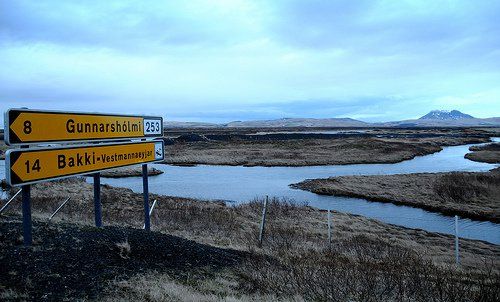
2. Fewer Crowds
The number of tourists visiting Iceland drops in half during the winter months. Famous sites like the Blue Lagoon only have a handful of visitors, hostels are quieter, and you can easily book almost any bus or tour at the very last minute since they don’t fill up this time of year. Reykjavik though is still full of locals (who are very friendly) and you’ll have enough hostel mates to not feel lonely.
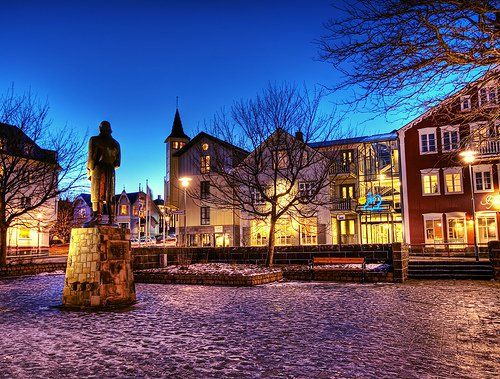
3. Prices Drop
Many of the tour operators drop their prices in December, January, and February to try and earn the business of the fewer travelers who do happen to be in town. With the economy of Iceland recovering from their recent economic collapse and prices returning to levels not seen in a decade, you can still find good deals in the winter months.

4. Longer Nights Means More Nightlife
Icelanders like to party and having about 18 hours of darkness gives them plenty of opportunity do it. The nightlife is active at all times of the year, with peaks in late December as schools and university lets out for the semester. Walk down Laugavegur street in the capital city at 530am and you’ll see people littered in the streets when the bars begin to close. If that’s your sort of thing you’ll have lots of fun in Reykjavik.

5. The Northern Lights
You can easily take night trips from Reykjavik up north to catch a glimpse of the aurora borealis, one of the best ways to catch extraterrestrial activity on Earth. It’s hit or miss so but you can increase your chances of seeing a spectacular night display by going on a completely clear evening. No matter what though, you’ll see one of the best starry skies imaginable.
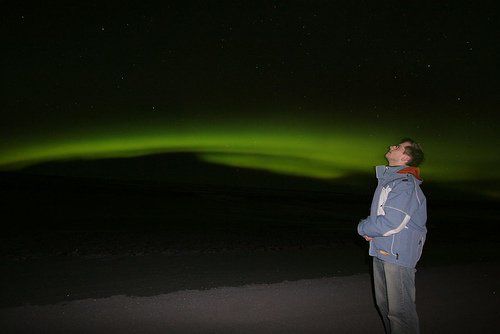
6. Long Sunrises and Sunsets
The sun doesn’t really rise to far above the horizon in Iceland during this time of year but since it hovers in the sky it makes for great twilight lighting that lasts much longer than in lower latitudes. It makes for some excellent photo opportunities and is an ideal light to improve on your decent travel photos.
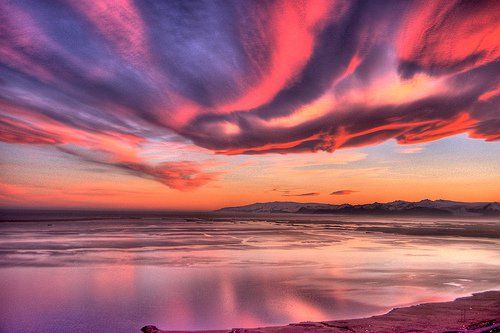
7. You Can Still Do Most Everything
People often imagine that Iceland grinds to a halt in the winter but for travelers most of the summer travel options are still available. You can’t go whale watching (on most days) for example, but you can climb glaciers, visit a volcano, go skiing, check out the holograms at Reykjavik City Museum (thanks for the tip J Travel Authority), and countless other things.
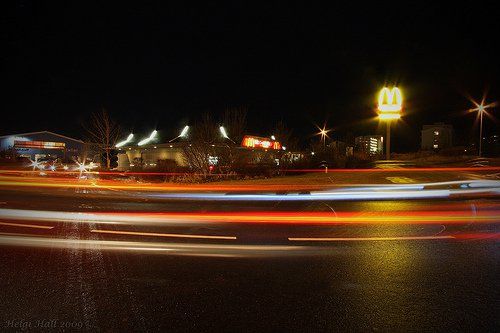
Iceland is quite a varied landscape and there is plenty to do as well as pick and chose from while you’re there. The winter doesn’t prevent you from missing much and even if the winter reduced your options in half, you’d have your hands full trying to decide what to do next. As for the longer nights, you’re likely to adapt more quickly than you think and can try shifting your body clock with peanuts to make it a smooth adjustment.
[photos by: Diego Cupolo, Stuck In Customs, James Cridland, passetti, Tom Olliver, Deivis, [email protected]]


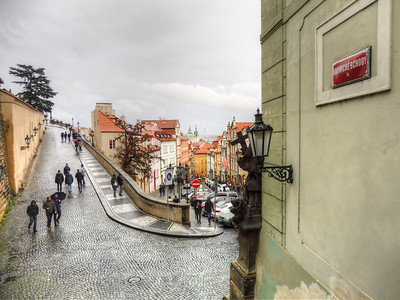









I was up in Iceland a couple of times during the winter and I would really like to see it in summer!
You forgot to mention that you don’t need to go to Blue Lagoon for a hot dip. There are half a dozen pools that could boil a lobster.
However, it still was expensive compared to the U.S. dollar. Beer was $10 in 1995.
Good point, they put that geothermal activity to good use in Iceland. Also, it is cheaper than it has been in the past (as one of the most expensive countries in the world) – a beer is about $6 now.
I would LOVE to see the aurora borealis in Iceland! For some reason, Iceland is everywhere on the web today. Wondering if this is a sign I should book my tickets now …
The prices I suspect will begin to creep up as the economy is slowly recovering. You won’t be disappointed!
Fantastic reasons to visit Iceland. I didn’t realize that it didn’t get that cold. We are way colder in Toronto and we travel to Quebec all of the time in the winter where it is really cold. Last year there were great deals on packages to Iceland, we should have jumped on one. Oh well, there is always next year. Beautiful photos too!
I think that’s one of the biggest misconceptions – got to be the name “Iceland”. Icelandair usually has good deals with stopovers so sure you’ll be able to get one in the future 🙂
Thanks Anil, I now have to add a new “must be seen ” in my list;
I did not realized that Iceland is not so could and the northern light is just fabulous.
You’re welcome 🙂
Interesting. I visited Iceland in June when there was 24 hours of daylight, so pretty much the opposite of your trip. I loved it but one thing I was bummed about missing out on was the Northern lights.
I would only add that while you can see pretty much everything near Reykjavik in the summer, it can be much more challenging to get out to eastern or northern Iceland. I believe many of the roads close from October-April or something crazy like that.
That’s true, it’s harder to get around by car and to get much further north and other parts of Iceland you’re options are limited to small prop planes.
Seeing the Northern Lights is my #1 travel goal right now I signed up for an email alerting service that will (hopefully) give me a few days notice of auroral activity, so I can hop on a plane. I was debating about the best place to see it, but after reading your post, I am pretty focused on Iceland. Thanks for this!
You’re welcome Barbara 🙂 I’m hoping to catch another glimpse of the lights in Norway before the winter is up. Iceland really impressed me, I didn’t think it could possibly live up to the hype, especially after seeing other parts of Scandinavia.
Sorry – but I’m a winter sun girl – the thought of hardly any daylight just doesn’t appeal & I can do 0 degrees here in Bristol.
haha, ok then.. perhaps in the summer 🙂
Iceland seems to be a nice place to travel to. My next destination! Thank you.
Icelandair has good fares and I must say the best coach class I’ve flown (throw Cathay Pacific up there too). Very comfortable, lots of legs room for the price, and with good service. I think you’d love it 🙂
Seeing the aurora borealis in Iceland is a definite goal of mine. Those photos are beautiful.
It’s got to be one of the easier places in the world to see the lights. Warmer too…
Very convincing! So, were you able to see the Northern Lights? Also – I have to know, did you take that sunrise/sunset pic…that’s enough to make me hop on a plane now and go!
I caught the lights although they were mostly at at the horizon, it wasn’t the best viewing night. That’s not much sunset photo, I’ll have to credit Tom Olliver for that one.
I was going to post my pictures from Iceland but ever since I switched to a Mac I can’t find a good way to upload pictures to my gallery :/
Re the switch to Mac – totally understand – I’ve been struggling with how to re-work my blogging workflow for the last 6 weeks! But it’s worth it! Still – you’ve peaked my interest in going there and taking photos!
I’d love to see the Northern Lights during winter, especially in Iceland.
While I’ve yet to compare them with other places, seems the drive out of Reykjavik is the easiest major city to see them from.
‘Cold’ is relative. Being a warm weather girl, I found Paris cold in November. Iceland would be freezing for me in winter. I’d love to see the northern lights but not sure I could withstand the cold…
haha, yes that’s absolutely true. It’s still cold in Iceland but not much more than -1, -2, -3C on most days. Compared to the summer when average temperatures are about 14C.
I’m not a big fan of the cold weather either but Iceland was such an amazing place I’d endure the temperatures many times over again.
OK, since you’ve (partly) convinced me 😉 allow me to do a little convincing of my own. Here’s what you’d expect if you were to spend Christmas in Sydney instead of Iceland. I thought of you after I posted it 🙂
Iceland in December may not be for everyone but I’d go there now if only I have the time. Their economy is slowly picking up which means goobye cheap deals in summer time!
There economy is recovering and their government is hoping at some point to switch over to the Euro. I can see prices only going up and up from this point on.
I’ve been wanting to do an Iceland trip for years now! Actually, you left out one more important feature of an Iceland excursion– the geothermal pools to warm your achy cold muscles and bones!
Ah yes, how could I forget. I think one of my favorite things about Iceland…
Those are some epic photos. I’ve heard good things about Iceland. I plan on visiting in the summer though. Only reason? I’m from Canada and part of the reason I’m traveling is to beat the cold.
All the best in 2010!
It’s not too warm then either though!
I’ve been to Iceland in summer and it was one of the best trips I’ve ever done – a truly naturally stunning and enchanting country. It would be so different to visit in winter but as so many of the sights are natural (waterfalls, glaciers, lakes etc) then they’d be still visible in winter. I loved the colour of Reykjavik, the character of their people and their practicla adaption to living in such a remote and chilly volcanic island. To those who’ve never been, try to go – it is a special place.
I felt the same way when I visited Mark. Truly a remarkable place and such a collection of unique natural sites in such a small geographic area it really is a special place.
Hi,
You brought up a point that I have also been thinking about: that in winter or December it would be too dark to appreciate all the natural wonders. So is it still worth going to Iceland at that period of time?
I think it is – and remember, there are still hours of daylight, just not many 😉
I like the “longer nights mean more nightlife”! You are hilarious!!
😀 Icelanders take partying to an entirely different level.
Great post on one of my favorite places in the world! I’ve traveled around Iceland in the winter and it was unbelievably cold that particular year. The next trip was in June and I experienced much better weather. It’s a wild wonderful destination any time of the year!
I’m hoping to make the comparison this summer as well when I circle back from the Americas to Europe and the Middle East. I’m with you though, even if the weather were especially harsh, I’d still love Iceland. It carved out a special little place in my heart.
The northern lights are convincing me, but 32F is not. My wee body can’t take cold. Yes, I see the irony because I’m from Canada. 🙂
haha, ok then. Granted summer is a *bit* warmer – around 50F.
I’d love to go to Iceland. Watched ‘Man vs. Wild’ a few days ago where he was dropped off somewhere in Iceland. So amazing that they have glacier rivers right next to bubbling hot pools!!
It’s a really varied landscape. Almost like an artist put it together with a Scandinavian touch.
Yes it does.. There is almost something mysterious about the place isn’t it? It’s like all the world’s mysteries are squashed on a tiny island in the middle of nowhere: northern lights,thermal pools, vikings and Bjork! ;p
Stunning, thanks for the views!
Iceland was the first place we visited when we started our travels. I happened to find a cheap ticket to Paris with a one week layover in Reykjavik, and I totally fell in love with the place.
I’d love to go back in winter. It’s amazing!
Since being there I can’t believe how many times I flew right over it. Great place (and prices) for a stopover.
Anil, this is incredible.
Thanks!
Just wanted to correct the statement that you could easily take night trips from Reykjavík up north to see the aurora borealis, while in fact you don’t have to leave the capital. I’m a native, have lived in Reykjavík all my life; and one of the things I love about living here is when I look up and see them dancing in the sky, especially when they are very bright.
Another thing I love is the temperature in the winter; and I’m actually quite surprised at the comments, as I’m willing to bet that none have been in Denmark in the wintertime, where you will get chills to the bone and have to drink hot drinks for a very long time to get warm. Here in Iceland, due to the damp, we never get that kind of a cold. Just put on a winter coat and gloves and you’ll be fine, especially around the mornings and late nights. When the sun is shining during the day, you can walk around in your shirt for quite a long time before you feel any cold (and not the danish cold where you can get frostbites if your not careful)
Thanks Jon, absolutely true and I did also catch a glimpse from the outskirts of town while I was there – thanks for pointing that out.
As for the comments on the temperature, I think it’s the name of the country which gives it a terrible reputation for cold! Imagine if Denmark was called “Icemark” and Iceland “Denland”. I think that would do wonders for the mis-perceptions 😛
Hi Jón,
I am considering a trip to Iceland in late November or December. It will be my first time, and I will be coming all the way from Singapore.
While I have been convinced that it will not be unbearably and uncomfortably cold, I am wondering if there will be enough light to do all the outdoor activities and take in the nature and sights?
From photos that I have seen, it looks like there’s so much beauty to be appreciated, and I’d hate to go all the way there and end up not being able to see anything or go anywhere (except during the four hours of daylight). Plus I am assuming it will be more dangerous to be driving around in longer periods of darkness and along icy roads.
Do you think, in terms of a first time experience, it might be better to wait till summer to visit? Or are there merits to a visit in winter that you would recommend?
Appreciate your advice. Thanks!
My reasons to go in the winter are above 😉 And there’s a lot to do at any time of the year, snow and ice are things people there know well and things tend to operate smoothly. Unless you want to drive around the ring road (Highway One) the winter in Iceland has much to offer.
Thanks for the information! I just booked a trip to Europe today that includes a 6 day stop in Iceland from December 14th-20th. I keep on going back and forth between being extremely excited, regardless on the time of year, but also being nervous that it is not stereotypically “the best” time to go! I love winter landscapes and I am very open to the possibilities that Iceland has to offer in Winter. The 4.5 hours of daylight might be a bit of a shocker and i’ll just have to make the most of the daylight. The weather itself will be no problem, as i live in Winnipeg and will be escaping -30 C, so really, anything is an improvement. Thank you for making me more excited and confirming that anytime is a good time to go!
I hope you have a wonderful trip. Iceland truly has a remarkable landscape and you’ll most likely get to enjoy them with fewer crowds and at a discount! Feel free to let me know if you have any questions beforehand as well…
I’ve been to Iceland twice now – at the tail end of summer in September, and at the end of winter in March. While I loved the September trip because I was able to go up north and the temps were very pleasant, I almost think I enjoyed the March trip more. The landscape is gorgeous either way, but covered with snow it just felt like I was unmistakably in Iceland. And I was able to do everything I wanted to do – driving around the Golden Circle, horseback riding, the Blue Lagoon, even snorkeling at Thingvellir. I’ll never forgot the experience of sitting in that crazy bright blue water of the Blue Lagoon while snowflakes landed in my hair.
The prices were much lower than in September, we got a great deal on flights, and it’s true – it really wasn’t that cold. It was actually warmer in Iceland while we were there than it was back home in Chicago!
It does feel like you’ve got the entire country to yourself in the winter, I loved it as well. Chicago in the winter just sounds tough – I always feel like Chicagoans have a think winter skin; Iceland was probably balmy comparatively 😉
Hello Anil,
I don’t know if you would be reading this post after 2010 (shows your comment).
My Husband and I are considering a trip to Iceland in Feb,2018.
I wished to gather some information from someone who has been there.
Since I’ve never been to Europe before, chalking out the itinerary for Iceland is seeming to be
a little tough.
Can you please help?
Thank You!
haha I’m always here (on the site). I’ll try to help – let me know.
Iceland was the first stop on the big trip so I was just there a couple months ago. Loved it! It is expensive but there are ways to get around it and going in the off season is the best way. Car rentals that were $185/day went down dramatically to $30/day in the off season. I just missed the Northern Lights though and I was SO bummed!!! I also found out when I was there that the name Iceland is definitely not true. Actually someone (i forget who) decided a long time ago to call Greenland, greenland and Iceland, Iceland. Even though in reality the names should have been switched and initally they were the names for the opposite country. They actually did that because they wanted Iceland to seem much colder and icy than it really was to make it worth less, thus making greenland seem better.
And yeah, the pools in Iceland are AWEsOME!!! I could get used to that lifestyle for sure. 🙂
Thanks Anli. I’m planning on viditng this December so your article is helpful!
Hi David, I’m happy to hear that and hope you have a wonderful trip!
Hi how long would u recommend me to travel to Iceland. Was looking at Reykjavik & akureyri.
Main aim is to see the aurora and do landscape shoots. just gonna do timelapse and take photos. stars..
is like 15 days enough? split btw 9days and 6 days in 2 cities
dates: 2nd december-16th december
cheers
There’s never enough time 😉 and it’s always a tough question to answer. But I think for what you’re looking for, it should be enough time to accomplish your goals.
So i am thinking of going in JAN – will the weather be as cold as MAINE where I am now? And will the lights be as vibrant? TY
It won’t be as cold as Maine but not exactly warm. As for the lights, do you mean the northern lights?
Hi Anil, your enthusiasm about Iceland sold me! I’ll be going this late November/early December. Although I no longer see it as a destination for a “deal” anymore. Everything went back up in prices since your 2009 article. Boo…
I want to ask, do you have any recommendations for a tour group for glacier climbing or hiking? I found a tour that has this route…..”On the drive towards Mýrdalsjökull , Iceland´s fourth largest glacier, we pass two impressive waterfalls, Seljalandsfoss and Skógarfoss and of course the world famous volcano, Eyjafjallajökull.”
Does it really matter which glacier or volcano we choose? This might sound dumb…but do they look or feel all that different? That tour is $235 USD per person! Very expensive! Your article back in 2010 on “How To Make The Most Out Of Your Stopover In Iceland” mentions that glacier climbs are somewhere around $100. Can you please tell me where you can find that?
Many thanks in advance!!!
P.S. I’m a new reader to your blog and love your coverage on the dual citizenship issue. Very informative.
Hi Sarah, I’m very happy to hear that, Iceland is quite a remarkable place to visit. You’re right, it’s not really a good deal anymore, not like it was a few years back when I wrote this. As for the tours, I’d recommend contacting this hostel to see what deals they have going on:
http://www.foxnomad.com/countries/iceland-travel-information/reykjavik-backpackers-in-iceland-review/
When I was there, they worked with a number of companies and often had lower rates on the usual hikes. That’s a good place to start to see if there are any $100 hikes left. I don’t think you can go wrong visiting any of the major glacier climbs but see I’d recommend looking for Svínafellsjökull.
I hope this helps some!
Hi My name is Fellon
I planning coming christmas holiday to explore iceland, its around Dec 12 and I’ll stay around 10-12 days in there
Do you’ve any idea what I can do, I went to Finland last winter… doing northern light trip, snowmobile, ice breaker cruise. just wondering can do the same things in Iceland too.
Absolutely, plus whale watching, glacier climbing and more: http://foxnomad.com/2010/02/25/how-to-make-the-most-out-of-your-stopover-in-iceland/
Hello Anil,
I loved your post about Iceland, not sure if you are still looking at this comment section or not but I have question for you, we are going to India in December for my brother’s marriage, so starting December 23rd we have week time to go somewhere while coming back we were thinking about doing two days in London (not sure if we could do much in winter, any ideas) and then fly to Iceland for 3 days, what do you think? Do you think its even enough time to cover anything worth in Iceland or can you recommend some other place for a trip like this. We really want to see northern lights if possible, thanks for your advise. I know its lot of questions but you being to so many places who else could answer better!
Hi Raj, I’m always around on my little corner of the Internet 😉 Your itinerary seems tight, 2 days in London and 3 in Iceland can be done, just make sure you don’t exhaust yourself out of exploring. You can pack a lot of adventure into Iceland over 5 days:
http://www.foxnomad.com/2010/02/25/how-to-make-the-most-out-of-your-stopover-in-iceland/
Northern lights is an easy day (well, night) trip from Reykjavik. I hope this helps a bit and I’ll be happy to answer any other questions you may have.
Thanks Anil for the response, being old post I was just not sure, its great that you take your time for people like us, thanks again.
I know its getting tight, so do you recommend doing some other country around London instead which is better for few days and in winter? or do you suggest its not worth losing two days in London during winter and just do Iceland?
It’s my pleasure, I appreciate your comments.
Honestly, pretty much anywhere in northern Europe is going to be uncomfortable in winter but London is one of my favorite cities in the world. There’s a lot to do there and a short visit will only have you wanting to return. The ultimate decision depends on your travel style. If you are an outdoor/adventure type, I would recommend the 5 days in Iceland. But if you’re more interested in seeing some specific sites in both places, it will be quick but go for the split.
Hello Anil,
Thank you for the great post. I am thinking of going to Iceland in Dec…Dec 13th thru Jan 10th. Is that a long time for a visit to Iceland?
I will primarily be hosteling around the country. My primary concern is that…is there much to do in Iceland like hikes, trips and trails to keep me occupied for a month in winter?
Are there buses between cities in Iceland or do I have to rent a car to travel around the 1500 km ring road?
Thank you
Hi Rohit,
It’s my pleasure. There are a lot of outdoor activities in Iceland to keep you occupied even in this small country. There is bus service year round but short local flights are often preferable in winter to hop around cities. Iceland is like an amusement park if you enjoy hiking, climbing, and the outdoors.
Hi Anil,
silent reader i am.. im planning to head to iceland in december… and was wondering travelling from one place to another requires renting a car?? any other option at all? can i survive on local busses then?
alternately did u manage to drive in the snow or the road are a ok for that purpose? hope to ehar from you soon! thanks for the great post.
Hi Fara, thanks for breaking your silence 🙂 There are local buses, you don’t need a car (depending on where you go) and in the winter, with heavy snow, you’ll take small planes (like taxis) from town to town, again, depending on where you’ll be going.
Great blog – we drove the Westfjords and north Iceland in August 2014 and saw the northern lights from Hvammstangi – amazing but we are planning an Oct trip next year so your info is useful (it may be Nov). Warmest people we have ever met were in Iceland – a very proud people. Compared to Australia Iceland is very affordable and we thought all prices less than we would pay for similar goods and food at home. By the way, we dived & snorkeled Silfra & can report tours run all through the year – only delayed if the roads are snowed under (apparently this rarely happens).
Glad I could help and thanks for sharing your experiences!
In fact… I think it’s best visiting during the winter. After all, it’s “Ice-land”, right?
Hey Anil
An exciting trip awaits for me and my friend heading up to Iceland during winter (dec 02 – 09), so trying to gather as much knowledge from the well-travelled as i could, really.
Would like to know a few things.
Firstly, i will be renting a car to drive round the ring route, which most people say its an excellent way to explore Iceland, no doubt about it. Only thing is, like you have mentioned in your post, that iceland, during winter is fairly mild, unlike Winnipeg. So, would some road paths be blocked due to changes in weather (ie snow storm, ice etc)? Or it is safe to assume that driving wouldn’t be that much of a problem per se, right from Reykjavik to the north , and back.
Second, since i am travelling by car around , do you have any recommendations as to where i can stay for the night? Given the time frame that i have with iceland, a one night stay in certain towns (starting from Reykjavik, doing a counter-clockwise) would be good, and also hoping to get the good deal of low prices ( not sure if there are motels, hostels, buget hotels along the ring road ). If there are trustworthy places, do let me know .
Thirdly, some of the more uncommon places of interest ( glaciers, frozen lakes and forest, ice caves, hiking and trekking, along the path of the ring road, and can probably do a side-track
Fourthly, are major credit cards (AMEX,visa,masters) accepted at petrol stations? Or is it just cash? Since this would be like a road trip, any details to take note of? I happen to know that say, if we do see a petrol station, fill the tank as we do not know when is the next refilling point ?
Lastly, are we right to say that durijg the drive, we might not see another soul for a few hours at least ? -random, i know –
So thats about all the questions, do get back to me, would love to hear from you soon
Best regards,
Shawn
Hi Shawn,
The roads may be closed in the winter, it depends on the conditions. I can give you a good recommendation for a place to stay in Iceland – you can find more information here: https://foxnomad.com/countries/iceland-travel-information
Credit cards should be widely accepted and the roads will be quiet late at night. If you need any more specific questions, feel free to get in touch with me on Plansify: https://www.plansify.com/anilpolat/
Hi Anil,
I hope you are still replying to queries here. I am planning to visit Iceland from 9th December to 15th December this year. I am contemplating if I should book the local tour to the ice cave, black sand beach now or can I book when I arrive iceland as I am afraid the tour will be affected by the weather.
Thank you.
Daphne
Hi Anil it is a good idea to spend the New Year’s here? how will the weather here be?
Same as most of the year, chilly but not *too* cold.
Hi Anil
how easy is it to drive around in Iceland. we are a family of four and we will be there for 7 days . we want to drive around for 4 days
It’s fairly easy (good roads, not much traffic) most times of the year.
Hi thanks for the reply. I am planning on driving in december 20 to 30. Do you think i should i should go for 4 wheel drive or a normal toyota will do.
Talk to the car rental company, it depends on the weather and where you’ll be going exactly but it probably won’t be necessary.
Any tips about seeing the northern lights? We are planning to go in the end of January- early February. We plan on staying for 5 days.
The two best options are to rent a car and drive a bit outside of Reykjavik or ask your accommodation, many places have group trips. Depending on the lights of course 😉
I cannot wait for my trip to Iceland on December 21 – December 27. If you were to plan an itinerary for someone, what would it be. We definitely want to go North and we definitely want to do the Blue Lagoon. We are staying at the Radisson Blue. Would you rent a driver to take us from place to place. This way he/she can give us the folklore of the country etc.
The Blue Lagoon is very easy – a half day you can do with a taxi or shuttle bus. It depends on what you like in particular, there are outdoor activities, hopefully northern lights, plus a lot more to do…
Great blog Anil. thanks for the very useful tips you sharing , My family is hoping to go there all the way from Sri Lanka .
I’m happy to hear it and hope you have a great trip!
Anil,
Here it is.
Was thinking of travelling to Iceland this winter. Has been on my list for the past few years. Am a solo traveler, and am not sure if I want to drive a rental in limited daytime on unfamiliar highways/bi ways. There are travel packages available as well. I am seeking an insight in how to make my trip as a solo female memorable and feed into my wanderlust. I am 62.
In the winter, driving will not entirely be possible depending on the road conditions (closures are not uncommon). It depends on the route ultimately – if you’re looking to go around the Ring Road there are some closer more accessible points from Reykjavik.